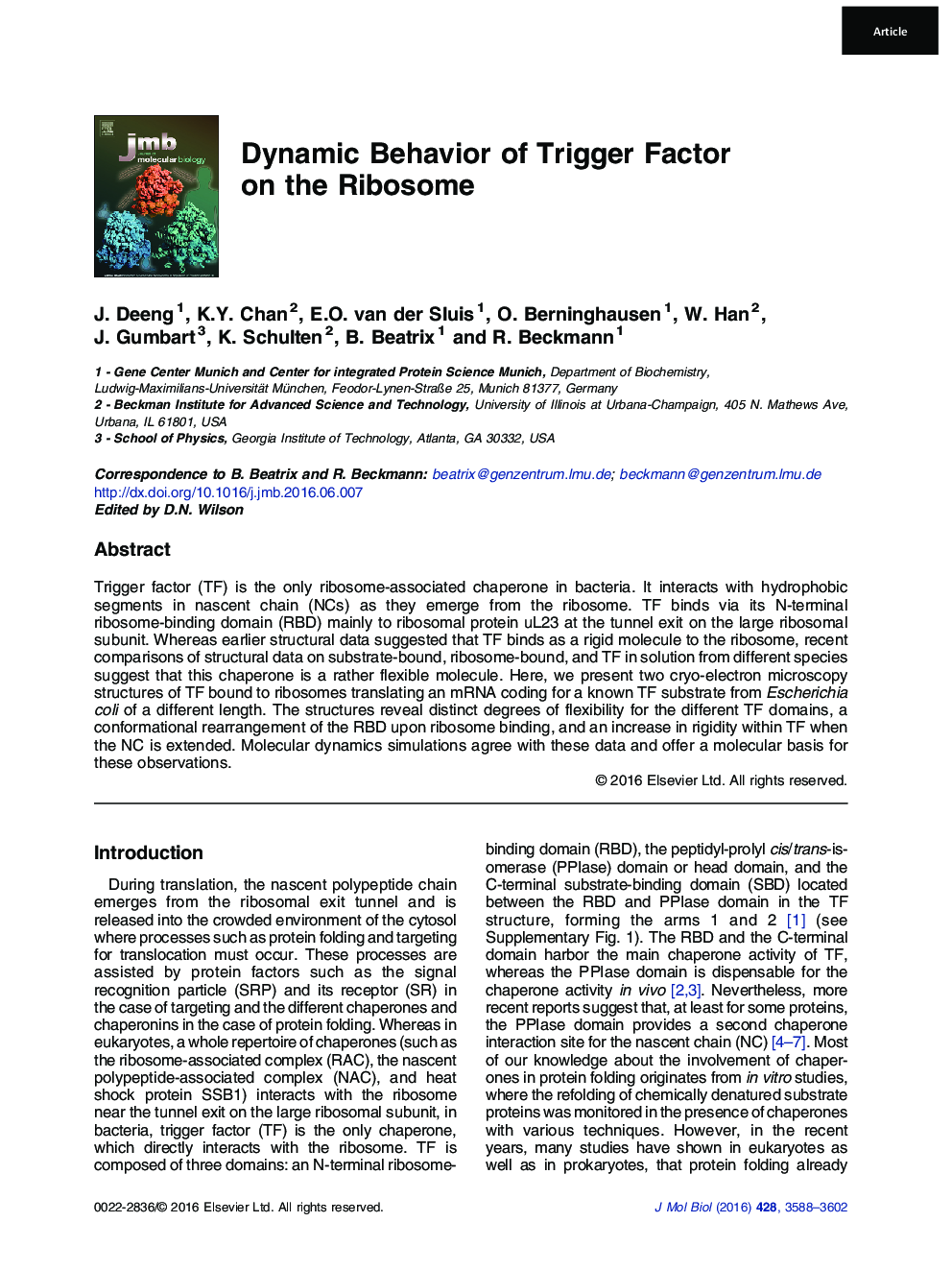| Article ID | Journal | Published Year | Pages | File Type |
|---|---|---|---|---|
| 2184223 | Journal of Molecular Biology | 2016 | 15 Pages |
•Trigger factor's interaction with NCs on the ribosome is studied.•We have analyzed TF–ribosome–NC complexes via cryo-electron microscopy.•When bound to the ribosome, TF's flexibility depends on the NC length.•The rearranged RBD of TF provides a first landing platform for the NC.•Conformational dynamics of TF on the ribosome are coordinated with NC binding.
Trigger factor (TF) is the only ribosome-associated chaperone in bacteria. It interacts with hydrophobic segments in nascent chain (NCs) as they emerge from the ribosome. TF binds via its N-terminal ribosome-binding domain (RBD) mainly to ribosomal protein uL23 at the tunnel exit on the large ribosomal subunit. Whereas earlier structural data suggested that TF binds as a rigid molecule to the ribosome, recent comparisons of structural data on substrate-bound, ribosome-bound, and TF in solution from different species suggest that this chaperone is a rather flexible molecule. Here, we present two cryo-electron microscopy structures of TF bound to ribosomes translating an mRNA coding for a known TF substrate from Escherichia coli of a different length. The structures reveal distinct degrees of flexibility for the different TF domains, a conformational rearrangement of the RBD upon ribosome binding, and an increase in rigidity within TF when the NC is extended. Molecular dynamics simulations agree with these data and offer a molecular basis for these observations.
Graphical AbstractFigure optionsDownload full-size imageDownload high-quality image (424 K)Download as PowerPoint slide
